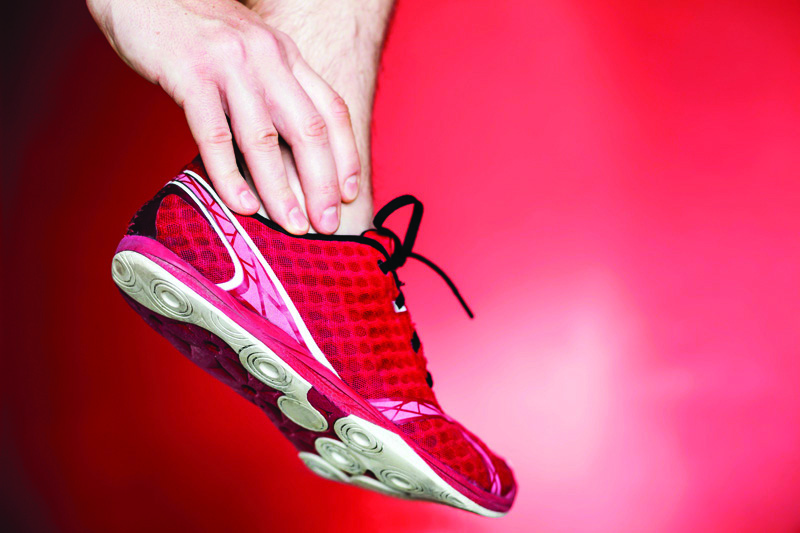(…and the critical lesson I learned!)
Written by Rick Platt
—
Scar tissue is defined as “dense fibrous connective tissue that forms over and/or around a healed wound or cut.” Also known as adhesions, it is the body’s way of repairing damaged tissues. Scar tissue is essentially the same protein (collagen) as the healthy tissue it replaces, but instead is deposited randomly at the site of damage. On the up side, scar tissue is a remarkable thing. Without it, whenever the body suffered a tear of muscle or tendon, that injury would remain permanently, and muscular/tendinous function would continue to deteriorate. How the body finds and heals wounds internally is an extraordinary process. But there is a major downside to scar tissue, one I learned the hard way in my late 20s as a serious competitive runner.
Like many younger athletes I thought I was indestructible. Yes, I would routinely get injuries—in high school, in college, and after graduation. I would routinely try to run through those injuries, to get ready for the next competition. And after a while, if the injury and pain persisted, I would finally give up, take a week or two off, then start back training for the next season or race. I thought the only downside of running through an injury was that you eventually had to take some time off.
My lesson about the dangers of scar tissue started on an afternoon workout, accompanying the William & Mary cross country team through the wooded trails behind Colonial Williamsburg. Two years earlier I had run the race of my life—a 2:23:55 at the 1977 Marine Corps Marathon—and I desperately wanted to better the U.S. Olympic Marathon Trials qualifying time standard of 2:21:54, so I could stand (with a hundred or more other serious competitive runners) on the same starting line as marathon legends Bill Rodgers, Frank Shorter, Jeff Galloway, Don Kardong and Tony Salazar. That I had zero chance of actually making one of the three spots on the U.S. Olympic team didn’t matter at all. Just to be there was all-important.
I had built up to 90 miles per week, much at high intensity. Running up a steep hill during that fateful workout with the William & Mary team, just two and a half weeks before my second Marine Corps Marathon—and the Olympic Trials qualifying attempt—I felt a sudden sharp pain where the Achilles tendon attaches to the gastrocnemius (calf muscle). I hobbled home, backed off from my training for a few days and in about a week or so was running normally again, or so I thought. I started the marathon, in lightweight racing flats, but the same injury reoccurred halfway through the 26.2 miles, and I had to drop out.
For the next two months, I kept repeating the same pattern: heal a bit, resume training, get injured again. Over and over, perhaps a dozen times, I made that mistake. What I didn’t realize then, and the major lesson learned, is that every time I re-injured the musculotendinous junction of the Achilles and calf, the healing process deposited a lump of scar tissue at the site. By the time I finally “gave up the ghost” of making those Olympic Trials, I had accumulated a large lump of scar tissue. Although there are a number of good ways to deal with that amount of scar tissue (time, massage, slow gradual increase in training), I was damaged enough that I became a fitness runner for three years, only able to run 15 miles or so a week.
Eventually, the scar tissue slowly transitioned to regular muscle and tendon, and I resumed my competitive running career in my mid-30s. But I had lost three of the prime running years of my life by continuing to run through a major injury. In my case, it was the calf muscle and its attachment to the Achilles tendon; but the lesson learned is the same for runners experiencing any type of injury—whether the hamstring, quadriceps or with the upper body. Every time an injury heals, scar tissue is deposited as part of the healing process. If you continue to re-injure the same site, you will accumulate a large amount of scar tissue that will persist for months or years.
There is a saying about computer hard drives: “It’s not if you will have a crash, it’s when you will have a crash.” If you run long enough, or especially if you start to compete in road races and attempt to improve your times, or if you enter a particularly long race like a half marathon or more, you will suffer occasional injuries. The key is to lessen the chances of those injuries, minimize their severity and recover from them. A judicious day or two (or week or two) of down time or easy running at the first sign of an injury can save you weeks or months of recovery. Take your time, be patient and listen to your body. You still have a lifetime of running to enjoy.

